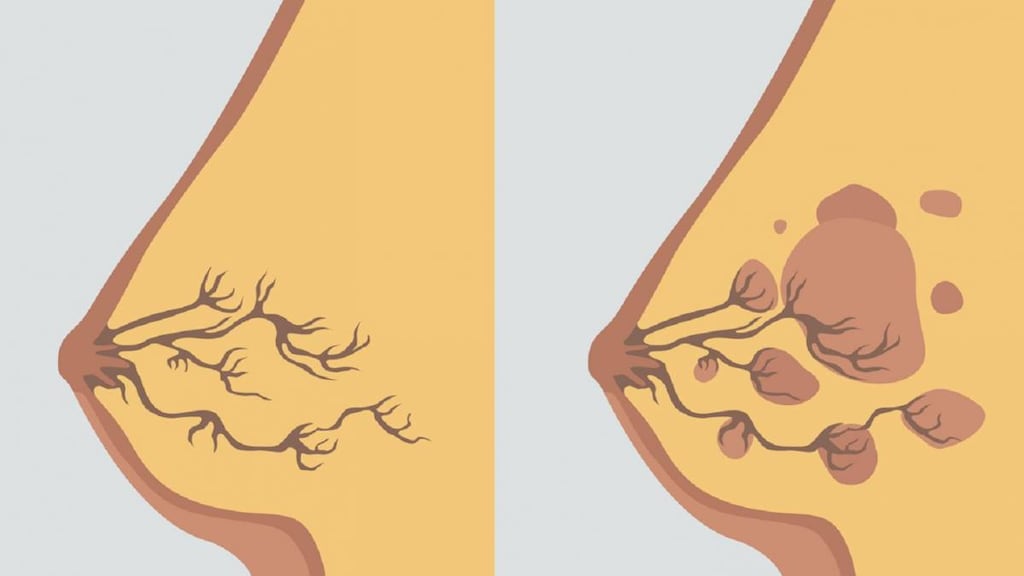
What are fibrocystic breasts?
The term fibrocystic breasts is used to describe the development of areas of fibrosis (thickened connective tissue) and sometimes fluid-filled cysts in one or both breasts.
Fibrocystic breasts are common with more than 50% of women being diagnosed with them at some point in their lives. Fibrocystic breast changes are more likely to occur in women aged 20 through to 50. They rarely occur after menopause, unless a woman is taking hormone replacement therapy.
Fibrocystic breasts used to be called fibrocystic breast disease; however, the word "disease" is misleading as the changes are considered a normal variant of breast tissue and are not associated with any increased risk for breast cancer.
What causes fibrocystic breasts?
Experts aren’t sure exactly what causes fibrocystic breasts but suspect hormones such as estrogen play a role, because changes in the breast tissue seem to be more bothersome before a menstrual period, and the pain and lumpiness associated with them tends to lessen once menstruation starts.
What are the symptoms of fibrocystic breasts?
Many women with fibrocystic breasts don’t have any symptoms. If symptoms do occur, they may include:
- Breast pain or tenderness, especially in the upper, outer area of the breast
- Breasts that feel lumpy or have a rope-like texture
- Areas of thickening within the breasts that blend into the surrounding tissue
- Breasts that fluctuate in size with the menstrual cycle
- A non-bloody green or dark brown nipple discharge that leaks without squeezing.
Symptoms may be felt more just before menstruation.
How are fibrocystic breasts diagnosed?
Although fibrocystic breast changes are considered normal, you should make an appointment with your doctor for an evaluation if you haven't been for a breast check before, because some symptoms are like those experienced with breast cancer.
Also see your doctor if:
- You find a new breast lump or area of thickening
- You have breast pain that is persistent or worsens
- Your breasts don’t return to their normal size after your period
- A previously evaluated breast lump now seems bigger or otherwise changed.
Your doctor will ask you about your symptoms and perform a breast examination. They may refer you for an ultrasound or mammography or other tests, such as a biopsy.
When viewed under a microscope, the following changes may be seen in fibrocystic breast tissue:
- Scar-like fibrous tissue (fibrosis)
- An overgrowth of cells within the milk ducts or lobules (milk-producing tissues) of the breasts
- Enlarged breast lobules
- Fluid-filled sacs (cysts).
How are fibrocystic breasts treated?
Because fibrocystic breast changes are considered a normal variant of breast tissue they don’t require treatment. If you have bothersome symptoms the following may help:
- Over-the-counter pain relievers, such as acetaminophen or ibuprofen
- Warm or cool compresses applied to the breasts
- Wearing a supportive bra
- Avoiding alcohol, caffeine, fat, or salt when symptoms are bad
- Evening out your hormone levels by taking an oral contraceptive (or discontinuing an oral contraceptive if this appears to be aggravating your condition)
- Supplements such as vitamins A, B6, C, E, or evening primrose oil may also help.




